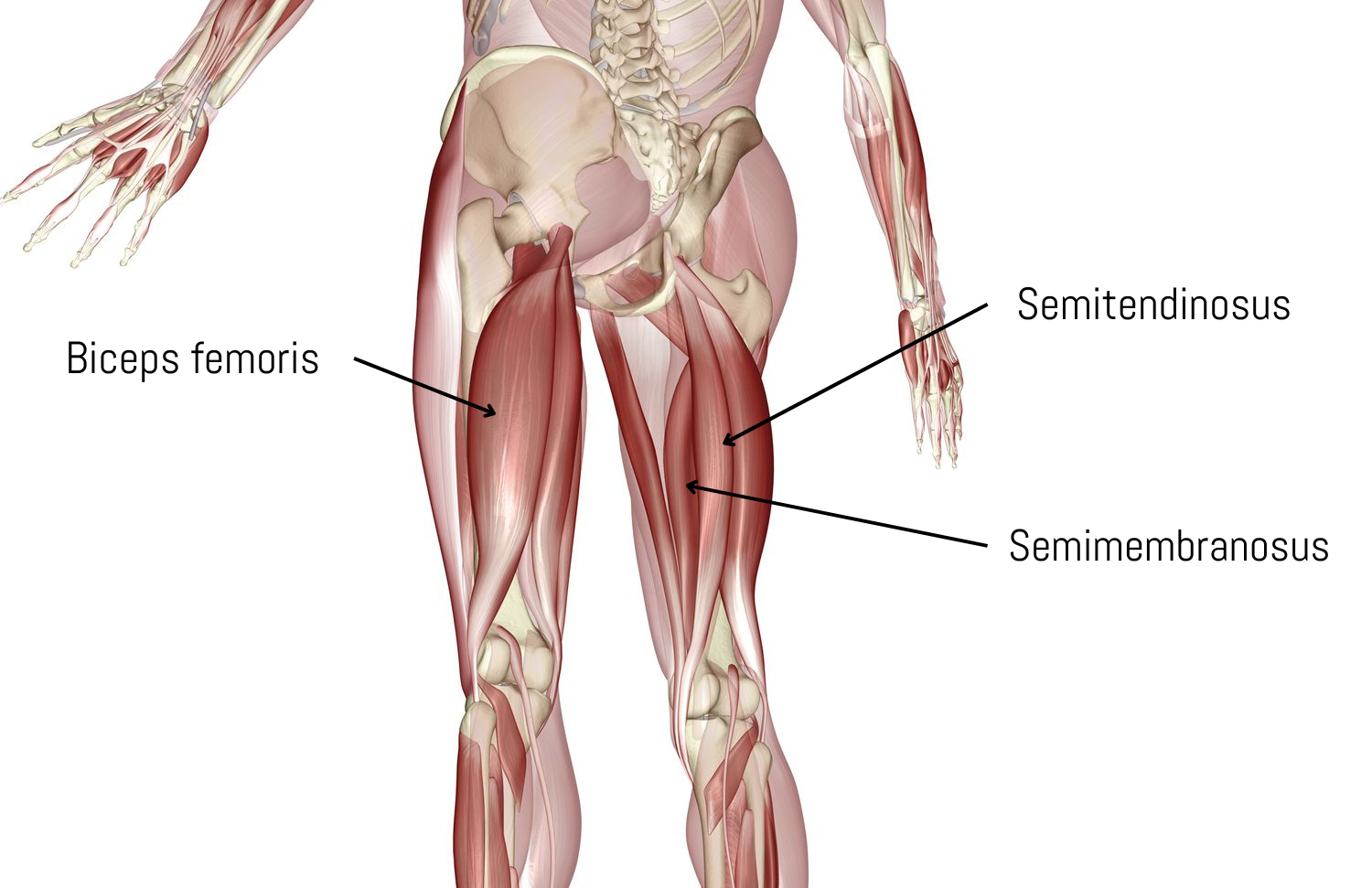Understanding and Managing Hamstring Muscle Injuries
Introduction Hamstring muscle injuries are a frequent issue among athletes and active individuals. Particularly prevalent in sports requiring explosive sprinting actions like athletics, soccer, basketball and football, which are all very common sports in the Sutherland Shire, these injuries can range from minor pulls to severe tears. After being a Physio for almost 20 years, I have seen a lot of them and to be honest, vast majority are 35+ year old males giving soccer another crack on the weekend.
Hamstring Anatomy The hamstring is comprised of three muscles that run down the back of the thigh — the semitendinosus, semimembranosus, and biceps femoris. These muscles originate from the ischial tuberosity at the base of the pelvis, cross the knee joint, and attach to the lower leg. They play a crucial role in extending the leg straight back and bending the knee. You can see these muscles in more detail within the images below.
Types and Severity of Hamstring tears There are several grades of muscles tears and they have varied times required to recover
Grade 1 tear: Mild damage that heals quickly, usually within 2 weeks and the size is under 10 millimeters.
Grade 2 tear: Partial tear requiring more extensive recovery, usually 4-6 weeks and can be much larger in size.
Grade 3 tear: A complete tear, representing the most severe form of injury which may take months to heal and the tear extends from one side of the muscle to the other.
Common Causes of Injury Hamstring tears typically occur from muscle overload, such as when an athlete/weekend warrior suddenly increases the intensity of their training or experiences an unusual load suddenly that the muscle hasn’t been conditioned for. These tears often happen during eccentric contractions — when the muscle lengthens while contracting — common in sprinting/running and jumping sports.
Risk Factors
Dehydration: Muscles can cramp (tighten) when they are meant to be lengthening while running due to dehydration, increasing the likelihood of injury.
Muscle Imbalance: Discrepancy in strength between the quadriceps and the hamstrings can increase the risk of injury.
Poor Conditioning and Muscle Tightness: Lack of strength and flexibility can make muscles more susceptible to injuries, particularly when it isn’t conditioned for that amount of work or load.
Muscle Fatigue: Tired muscles are less capable of withstanding the stress of exercise, increasing injury risk.
Age and Activity: Adolescents in growth spurts and older athletes who do not regularly engage in stretching or strengthening may be more prone to injuries.
Symptoms of a Hamstring Strain
Sudden, sharp pain during activity.
Swelling and bruising along the thigh.
Weakness in the hamstring that may persist for weeks.
Bruising may appear depending on the location of the tear.
Diagnostic Imaging
X-rays: Helpful in diagnosing avulsion injuries where the tendon may pull a piece of bone away, but would not be appropriate to assess a muscle tear.
Ultrasound: Often a cheaper alternative to an MRI and can be used to assess the degree of tearing and location.
MRI Scans: Provide very detailed images of soft tissues and help assess the extent of the injury.
Effective Treatments Nonsurgical Approaches:
RICE Protocol: Rest, Ice, Compression, and Elevation are critical first steps in treating hamstring tears. The idea is the compress the torn fibres and limit swelling from extending further apart, allowing for early rapid healing. We use a Game Ready Med4 Elite unit to rapidly compress and run chilled water through a sleeve wrapped around the area.
Physiotherapy: Early therapy focuses on restoring flexibility through gentle stretches, gradually introducing strengthening exercises as healing progresses and minimising the potential for scar tissue development and this will often cause recurrent tears. Your Physio can also advise the best time to get back on the field or back to activity.
Should I stretch a muscle tear?
This is a question we get asked a lot and also something that we bring up early in the recovery process. The answer is initially, No. We dont want to be further pulling on the damaged muscle fibers. This is often contradictory to how you feel, however it important to understand that once a tear has occurred, all the surrounding healthy muscle fibers will stay slightly switched on in an attempt to protect the torn fibers and limit tensile load. In other words, this tightness is a good thing and we don’t want to stretch it out, yet.
Surgical Treatment Surgery may be necessary for severe cases, particularly avulsion injuries. The procedure typically involves reattaching the tendon to the bone with anchors. Post-surgery rehabilitation is crucial and focuses on regaining flexibility and strength. It is important to note however, that this is a rare requirement.
Recovery and Rehabilitation Recovery depends on the severity of the injury, but most individuals can regain full function. A structured rehabilitation program is essential for a successful recovery and to prevent further injuries.
Prevention Tips
Regular Exercise: Incorporate stretching and strengthening exercises into daily routines.
Proper Warm-Up: Always warm up before engaging in physical activity.
Balanced Training: Ensure that training and exercise routines promote balanced muscle development.
Emerging Treatments
Platelet-Rich Plasma (PRP) Injections: This innovative treatment, using a concentration of a patient’s own platelets, aims to accelerate healing of injured tissues. While promising, PRP's effectiveness is still being studied.
Protein and collagen supplementation: This can support the recovery process to help boost healing when taken in conjunction with an appropriate rehabilitation program. Your Physiotherapist should be able to advise further on this.
Conclusion Hamstring injuries require careful management to ensure full recovery and prevent future issues. Athletes, particularly in the Sutherland Shire, should seek professional advice and adhere to a rehabilitation program tailored to their specific needs. By understanding the risks and implementing preventive measures, individuals can enjoy a safe and healthy sporting career or simply the weekend kick around with mates.

